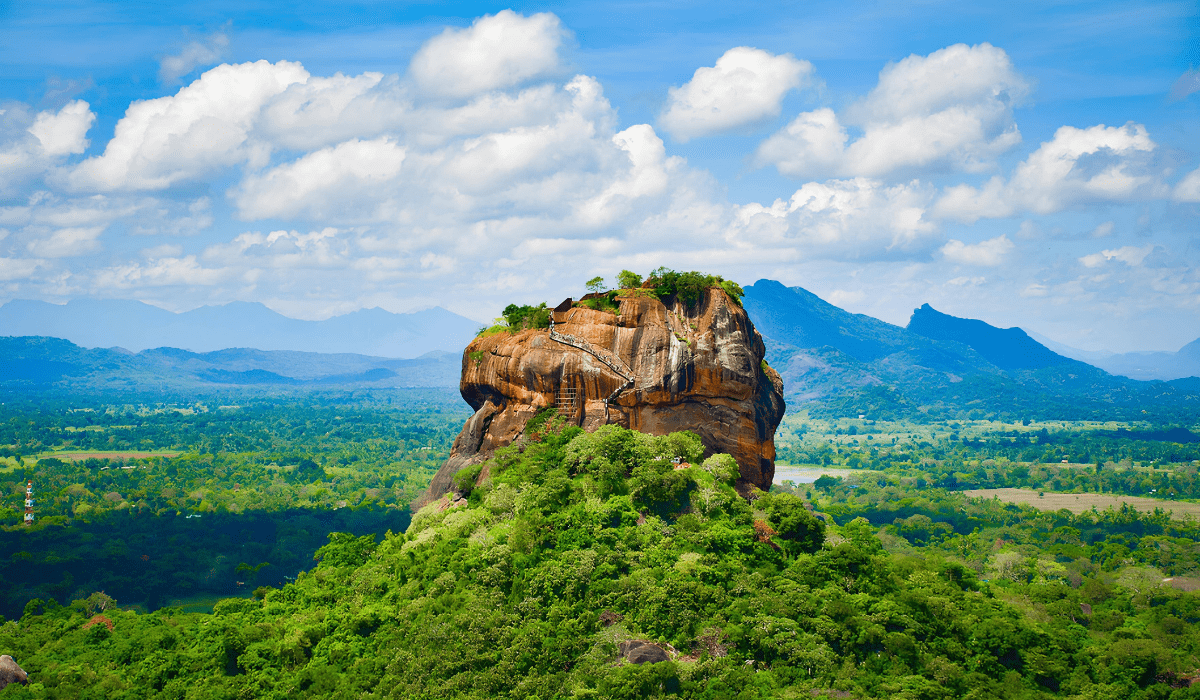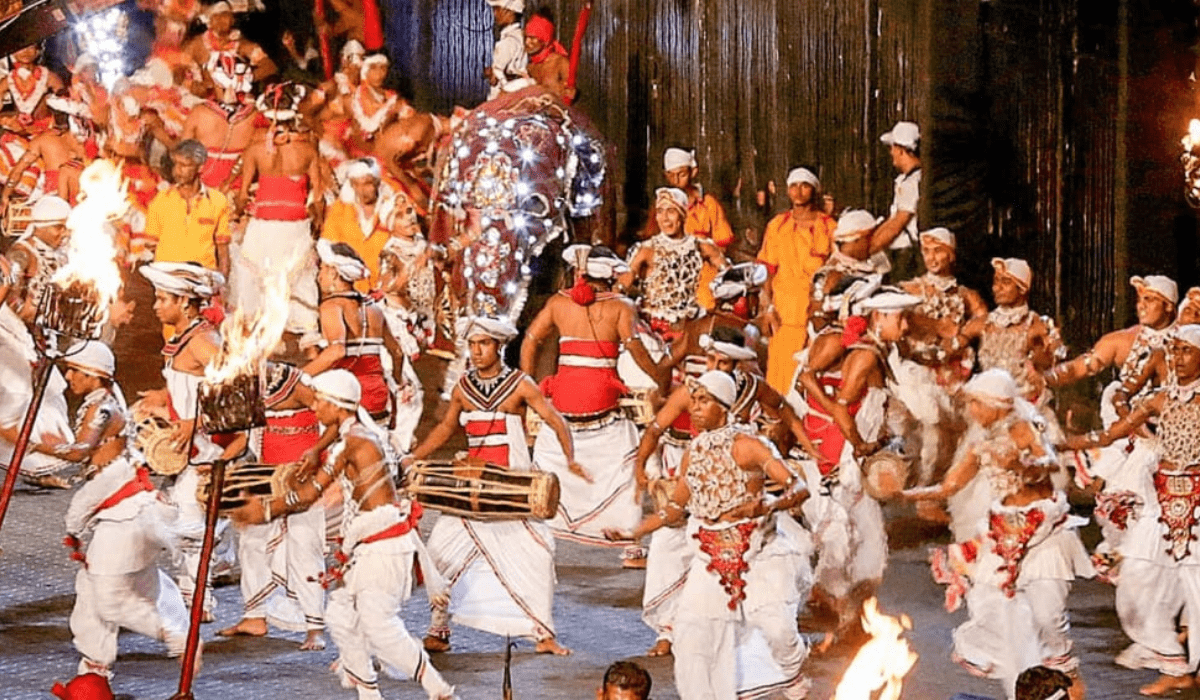Introduction
The Sigiriya: Sri Lanka is an unparalleled testament to the island’s rich cultural heritage and architectural ingenuity. Often referred to as the “Eighth Wonder of the World,” Sigiriya is a rock fortress and a palace complex located in the heart of Sri Lanka’s Matale District. This majestic site is a symbol of the island’s historical and cultural significance, drawing thousands of tourists each year who seek to explore its wonders. This comprehensive article delves into the historical background, architectural brilliance, heritage value, and its status as a premier tourist destination.
Historical Background The Sigiriya
The history of The Sigiriya: Sri Lanka dates back over 1,500 years. The site is most famously associated with King Kashyapa I, who reigned from 477 to 495 CE. According to ancient chronicles, Kashyapa, the son of King Dhatusena, seized the throne from his father and fearing retribution from his brother Moggallana, who was the rightful heir, he moved the capital from Anuradhapura to the more secure location of Sigiriya.
Sigiriya’s history, however, extends beyond King Kashyapa’s reign. Archaeological evidence suggests that the rock fortress was inhabited during prehistoric times and later used as a Buddhist monastery around the 3rd century BCE. This historical layering makes Sigiriya a unique palimpsest of Sri Lankan history, offering insights into the island’s ancient civilization.
Architectural Brilliance
The architectural marvel of The Sigiriya: Sri Lanka is a blend of natural and human ingenuity. The centerpiece is the Lion Rock, a massive monolith rising nearly 200 meters (660 feet) above the surrounding plain. The rock’s summit, covering an area of 1.6 hectares, was transformed into a complex of elaborate structures including palaces, gardens, and reservoirs.
- The Lion Staircase: The ascent to the summit is marked by the remnants of a giant lion’s paws carved into the rock, which once formed part of an enormous brick and plaster lion structure. This grand staircase provided both a majestic and secure entrance to the upper palace, symbolizing the power and grandeur of King Kashyapa’s reign.
- Water Gardens: At the base of Sigiriya, the water gardens are a testament to the advanced hydraulic engineering skills of the ancient Sri Lankans. These gardens consist of symmetrical pools, fountains, and terraces, which were designed to capture and utilize monsoon rains. Even today, the fountains function during the rainy season, showcasing the ingenuity of the ancient engineers.
- Boulder Gardens: As visitors ascend the rock, they pass through the Boulder Gardens, which feature pathways and terraces amidst large natural boulders. These gardens are believed to have served both decorative and defensive purposes.
- Mirror Wall and Frescoes: Halfway up the rock, the Mirror Wall is a smooth, polished surface that once reflected the king’s image as he passed by. This wall is adorned with ancient graffiti, known as Sigiri Graffiti, written by visitors over the centuries, providing a fascinating glimpse into the thoughts and expressions of early travelers. Adjacent to the Mirror Wall are the famous frescoes of Sigiriya, depicting celestial maidens known as the “Sigiriya Damsels.” These frescoes, painted with natural pigments, remain vibrant and are celebrated for their artistic beauty.
- The Summit: The summit of Sigiriya rock is the location of the royal palace complex. The ruins of the palace include foundations of various structures, large water reservoirs, and terraced gardens. The views from the top are breathtaking, offering a panoramic vista of the surrounding forests and villages.

Heritage Value of the Sigiriya
The Sigiriya: Sri Lanka holds immense heritage value, recognized as a UNESCO World Heritage Site in 1982. This recognition underscores its significance as a cultural and historical treasure. The site is a vivid representation of the ancient city planning, architecture, and landscape design of the time.
- Cultural Significance: Sigiriya is an enduring symbol of Sri Lankan identity and pride. It is deeply embedded in the island’s cultural consciousness and is often featured in literature, art, and folklore. The site is a testament to the island’s rich history and its capacity for artistic and architectural excellence.
- Archaeological Importance: Ongoing archaeological research at Sigiriya continues to reveal new insights into ancient Sri Lankan civilization. Excavations have uncovered artifacts, inscriptions, and structures that provide valuable information about the social, political, and religious life of the period.
- Conservation Efforts: The preservation of Sigiriya is a priority for Sri Lanka. Conservation projects have been undertaken to restore and maintain the site, ensuring that future generations can continue to marvel at its beauty and historical significance.
Sigiriya as a Tourist Destination
The Sigiriya: Sri Lanka is one of the most visited tourist attractions in the country, drawing travelers from around the globe. Its unique blend of history, culture, and natural beauty makes it an essential part of any Sri Lankan travel itinerary.
- Visitor Experience: Visitors to Sigiriya can explore the entire site, from the water gardens at the base to the summit of the rock. The journey to the top, although challenging, is immensely rewarding, offering both a physical and sensory experience. The well-preserved ruins and the panoramic views provide an unforgettable experience.
- Guided Tours: To fully appreciate the historical and cultural context of Sigiriya, guided tours are available. Knowledgeable guides provide in-depth information about the site’s history, architecture, and significance, enriching the visitor experience.
- Accessibility: Sigiriya is conveniently accessible from major cities such as Colombo and Kandy. The site is located approximately 175 kilometers (109 miles) from Colombo and can be reached by car or bus. The nearby town of Dambulla offers accommodation options ranging from budget to luxury, making it an ideal base for exploring Sigiriya and other nearby attractions.
- Nearby Attractions: The Sigiriya: Sri Lanka is often combined with visits to other nearby attractions. The Dambulla Cave Temple, another UNESCO World Heritage Site, is located just 17 kilometers (10 miles) away and is renowned for its ancient Buddhist cave paintings and statues. Additionally, the ancient city of Polonnaruwa and the Minneriya National Park are within easy reach, offering further opportunities for exploration and adventure.
Practical Information on Sigiriya for Visitors
For those planning a visit to The Sigiriya: Sri Lanka, here are some practical tips to enhance your experience:
- Best Time to Visit: The ideal time to visit Sigiriya is during the dry season, from December to April. This period offers pleasant weather and clear skies, making it perfect for sightseeing.
- What to Bring: Comfortable walking shoes, sunscreen, and plenty of water are essential for the climb. A hat and light clothing are also recommended due to the warm climate.
- Entry Fees: There is an entrance fee for visiting Sigiriya, which contributes to the maintenance and conservation of the site. Fees may vary for local and international visitors.
- Opening Hours: Sigiriya is open to visitors from early morning until late afternoon. Arriving early not only avoids the heat but also provides a quieter experience with fewer crowds.
Conclusion
The Sigiriya: Sri Lanka is a beacon of the island’s rich historical and cultural heritage. Its towering presence, combined with the ingenuity of its construction and the beauty of its surroundings, makes it a must-visit destination for any traveler. As a symbol of Sri Lankan pride and a testament to ancient engineering, Sigiriya continues to captivate and inspire visitors from around the world.
Whether you are a history enthusiast, an architecture lover, or simply a traveler seeking breathtaking views and unforgettable experiences, The Sigiriya: Sri Lanka offers something for everyone. Explore its ancient ruins, marvel at its artistic frescoes, and stand in awe of the panoramic vistas from its summit. The magic of Sigiriya awaits, ready to transport you back in time to an era of kings and palaces, where history and legend intertwine amidst the lush landscapes of Sri Lanka.





2 thoughts on “The Sigiriya: Sri Lanka, Iconic Rock Fortress”